Wurillba Radio Observatory
Early 2009 (from our old web site)
The site below is currently being surveyed by the group as a possible site for Radio Astronomy. Located 45kms East of Adelaide near Mt Barker it is hoped to offer a suitable radio quiet area for an Antenna Farm and enough space for Radio Interferometry.
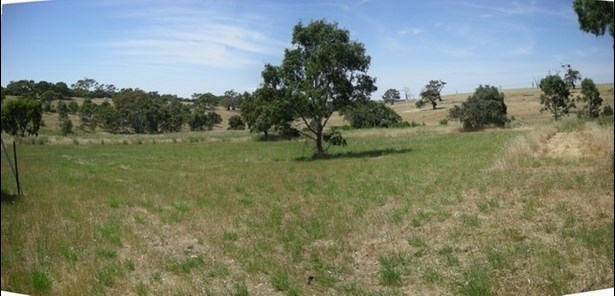
-
Johns' Jupiter Radios
- Thu, 11/12/2009
- John has built 2 Jove radios as described in August 2008 copy of Silicon Chip. The radios tuned to 20.1 and 25.61 MHz are connected to the line inputs of a computer which is running Skypipe II

Jove receiver 20-30Mhz

20MHz band double dipole at Wurillba

A typical 24 hour period of data at 2 frequencies - 20.1MHz and 25.61Mhz , data collected by 'Skypipe' 11 software.
-
Parabolic Dish Antenna Project
- John was given a 2.8metre dish, "Blair, can you give me a hand to move something on Saturday, going to need the big trailer"

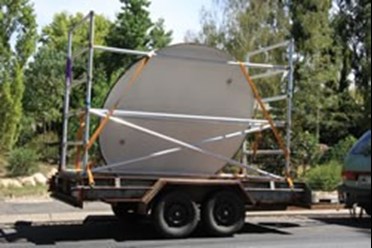


Dish installed with helical feed
Radio Frequency Interference (RFI) Survey
Sat, 11/28/2009
In preparing the Wurillba site, the group felt is was important to conduct an RFI survey to identify radio spectrum that is radio quiet enough for a radio astronomy project.
Despite Wurillba being in a rural location our modern society demands access to communications and media everywhere and so strong RFI exists even in the most remote areas including:
- Two-way Radios and Repeaters
- Cellular Phone Networks
- Radio and TV Broadcast Repeaters
- Satellites
- Power Lines
- Electronic Equipment
- Power Inverters
- Ionosondes
- Harmonics generated from all the above

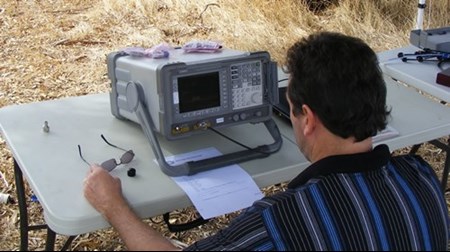
Consequently a wide band (18Mhz to 1.5Ghz) receiver monitoring station is one of the first projects planned by the group at the Wurillba site.
We were able to obtain an Agilent E7401A EMC Analyser to determine the frequency and amplitude of any received signals at the site, present at the time of the survey. The results of the survey, carried out on Sunday, March 15th 2010, are posted on the following page. The EMC Analyser was connected to a discone antenna for the survey. Considering the frequency response of the antenna used, the responses below 100MHz were quite poor, exhibiting significant interference across the HF band and well into VHF. Things improved above 240MHz to make the site more suitable for RA above the VHF bands.
RFI Survey Frequency Selections
Sat, 11/28/2009
The RFI Survey frequency range used will cover frequencies from 18MHz to 1.5GHz. Although natural radio emissions from space cover the total range of the electromagnetic spectrum, on the earth's surface the majority of this spectrum is blocked by the earth's magnetic field and atmosphere only allowing few regions to pass.
In the radio spectrum the earth’s atmosphere becomes increasingly transparent above 18MHz and then increasingly opaque at around 40GHz.
Further natural sources also have spectra that fall off with frequency, so even if we keep the same antenna aperture (effective area) of a radio telescope the signal level will decrease with frequency requiring ever larger antennas.
Hence the survey range from 20MHz to 1.5GHz seems the most practical in terms of equipment currently available and what could be built by the ASSA Radio Astronomy Group in the near future.
Note that each trace is about 2MHz span width referenced at 70.71 microvolts into 50 ohms or -70dBm. Resolution bandwidths were selected by the signal content and maximum sweep time considerations. Where there was a high level of interference/signal level, the resolution bandwidth was not reduced to maximise dynamic range. Where there was a low or occasional level of interference/signal level, the resolution bandwidth was reduced, check out the sweep times required to scan 2MHz at a 3Hz bandwidth.
18MHz - 22MHz for AM reception of decametric emissions from Jupiter.
24MHz - 28MHz for AM reception of decametric emissions from Jupiter.;
Some of the scans are below.

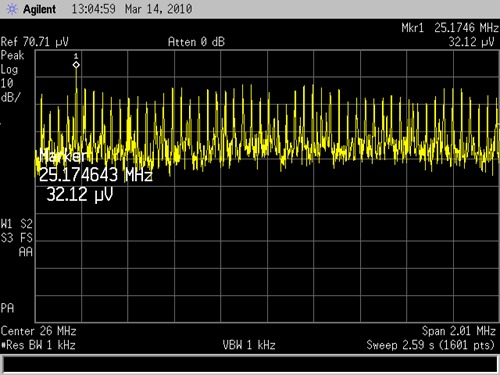



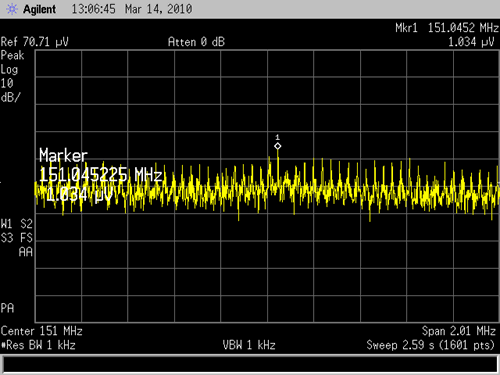



Wurillba in 2018
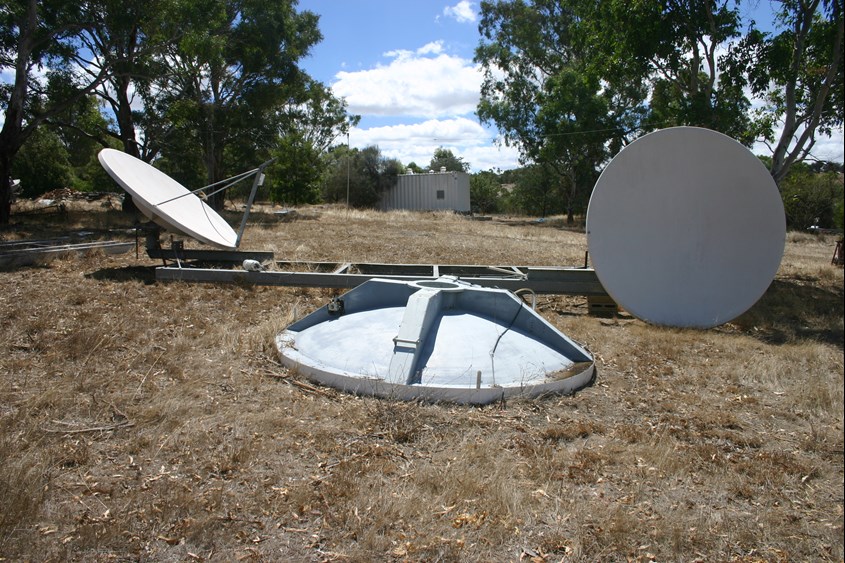

2 Dishes recovered from near Yunta, South Australia
A lot of effort is going to have to happen for these big dishes to be useful, the wind loading on them is hugh!.